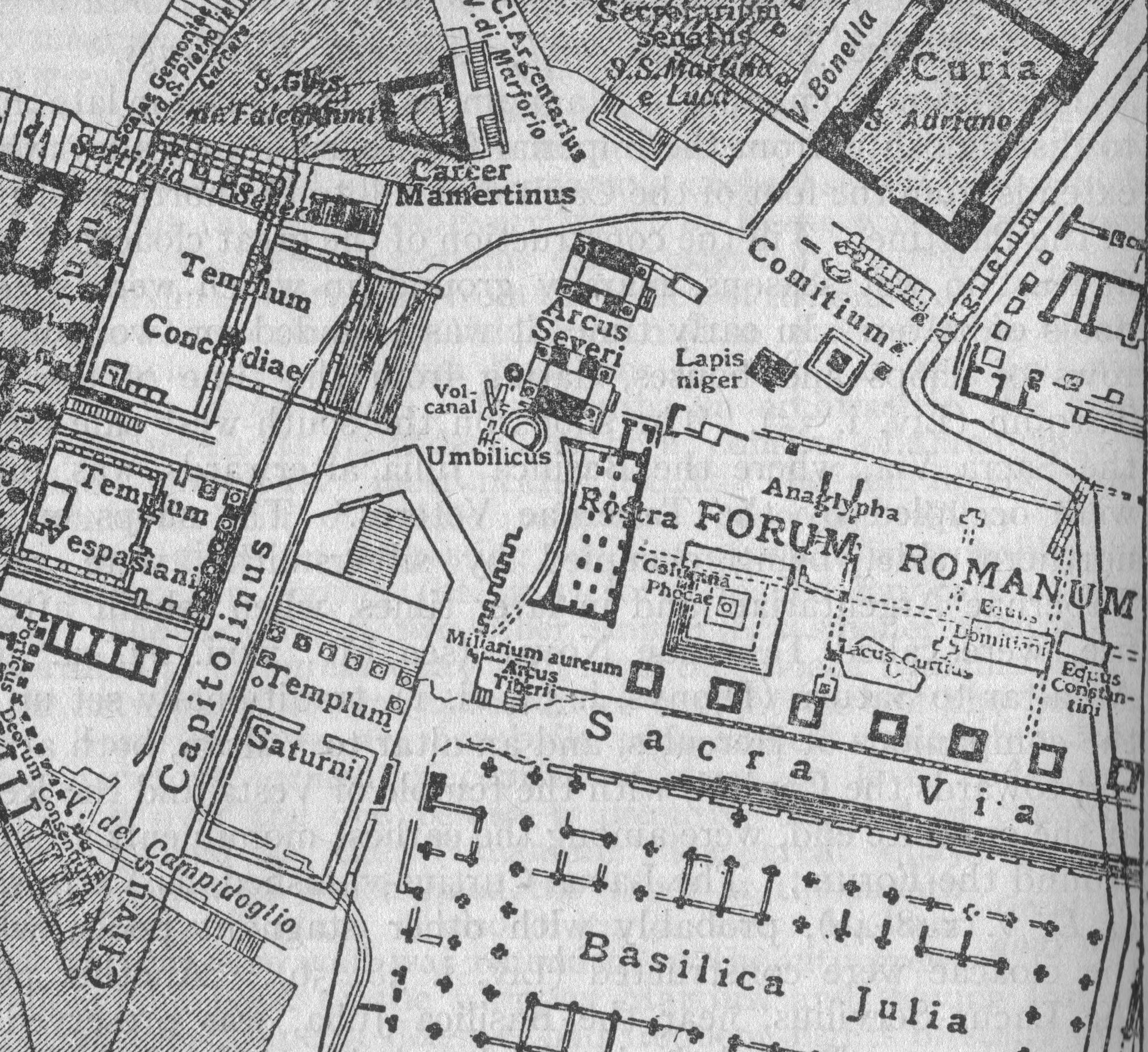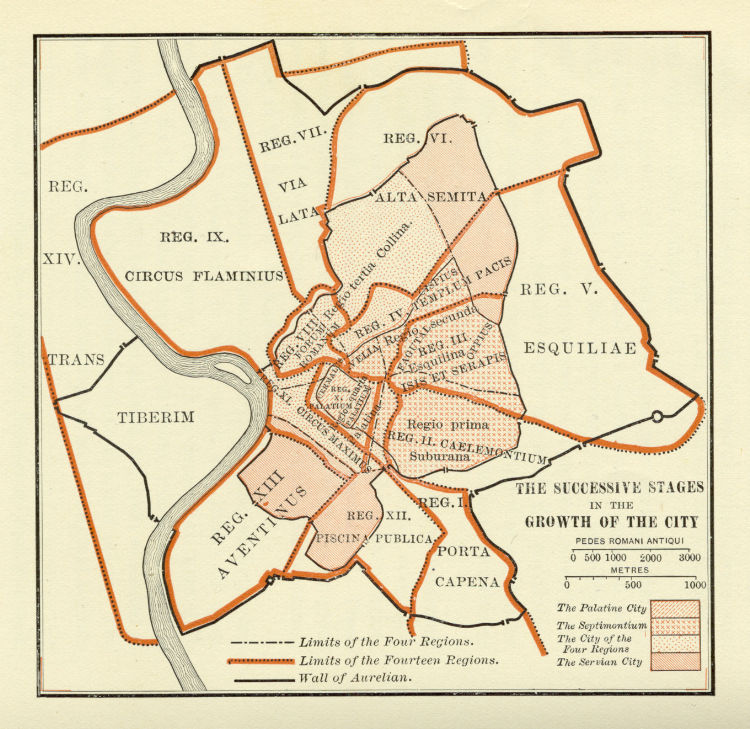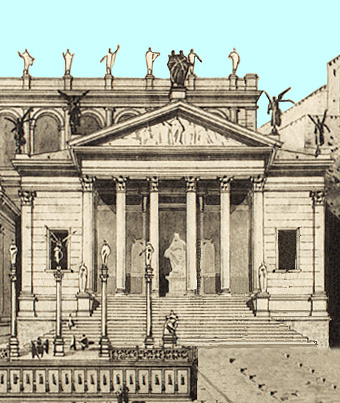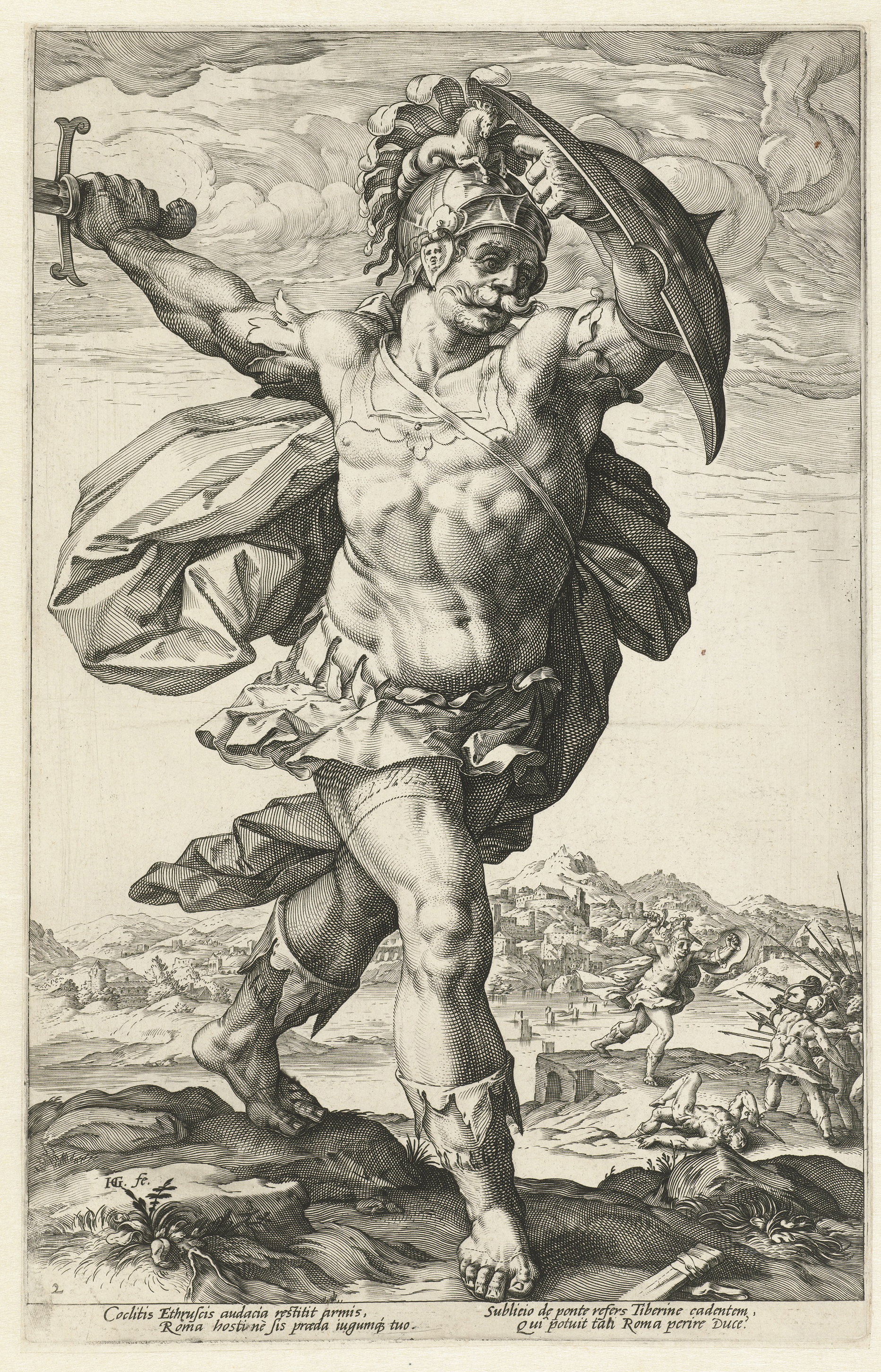|
Volcanal
The Shrine of Vulcan ( it, Volcanale), or Vulcanal, or Volcanal, was an 8th-century BC sacred precinct on the future site of the Roman Forum in Rome, modern Italy. Dedicated to Vulcan, the Roman god of fire, it was traditionally considered to commemorate the spot where the legendary figures Romulus and Tatius concluded the peace treaty between the tribes known as the Latins — on the Palatine Hill — and the Sabines — on the Quirinal and Esquiline. This famous merger of the hill-villages was said to be the foundation of the Roman state. Description The original Vulcanal was an open-air altar on the slopes of the Capitoline Hill in Rome in the area that would later become the Comitium and Roman Forum. It was located in the open here, between the hill-villages, in the days before Rome existed, because the fire god was considered to be too destructive to be located anywhere near an occupied house. (He was mainly worshiped in order to avert fires.) It contained a lotus tre ... [...More Info...] [...Related Items...] OR: [Wikipedia] [Google] [Baidu] |
Vulcan (mythology)
Vulcan ( la, Vulcanus, in archaically retained spelling also ''Volcanus'', both pronounced ) is the god of fire including the fire of volcanoes, deserts, metalworking and the forge in ancient Roman religion and myth. He is often depicted with a blacksmith's hammer. The Vulcanalia was the annual festival held August 23 in his honor. His Greek counterpart is Hephaestus, the god of fire and smithery. In Etruscan religion, he is identified with Sethlans. Vulcan belongs to the most ancient stage of Roman religion: Varro, the ancient Roman scholar and writer, citing the Annales Maximi, records that king Titus Tatius dedicated altars to a series of deities including Vulcan. Etymology The origin of the name is unclear. Roman tradition maintained that it was related to Latin words connected to lightning (), which in turn was thought of as related to flames. This interpretation is supported by Walter William Skeat in his etymological dictionary as meaning ''lustre''. It has be ... [...More Info...] [...Related Items...] OR: [Wikipedia] [Google] [Baidu] |
Volcanal 001
The Shrine of Vulcan ( it, Volcanale), or Vulcanal, or Volcanal, was an 8th-century BC sacred precinct on the future site of the Roman Forum in Rome, modern Italy. Dedicated to Vulcan, the Roman god of fire, it was traditionally considered to commemorate the spot where the legendary figures Romulus and Tatius concluded the peace treaty between the tribes known as the Latins — on the Palatine Hill — and the Sabines — on the Quirinal and Esquiline. This famous merger of the hill-villages was said to be the foundation of the Roman state. Description The original Vulcanal was an open-air altar on the slopes of the Capitoline Hill in Rome in the area that would later become the Comitium and Roman Forum. It was located in the open here, between the hill-villages, in the days before Rome existed, because the fire god was considered to be too destructive to be located anywhere near an occupied house. (He was mainly worshiped in order to avert fires.) It contained a lotus tre ... [...More Info...] [...Related Items...] OR: [Wikipedia] [Google] [Baidu] |
Roman Forum
The Roman Forum, also known by its Latin name Forum Romanum ( it, Foro Romano), is a rectangular forum (plaza) surrounded by the ruins of several important ancient government buildings at the center of the city of Rome. Citizens of the ancient city referred to this space, originally a marketplace, as the ', or simply the '. For centuries the Forum was the center of day-to-day life in Rome: the site of triumphal processions and elections; the venue for public speeches, criminal trials, and gladiatorial matches; and the nucleus of commercial affairs. Here statues and monuments commemorated the city's great men. The teeming heart of ancient Rome, it has been called the most celebrated meeting place in the world, and in all history. Located in the small valley between the Palatine and Capitoline Hills, the Forum today is a sprawling ruin of architectural fragments and intermittent archaeological excavations attracting 4.5 million or more sightseers yearly. Many of the olde ... [...More Info...] [...Related Items...] OR: [Wikipedia] [Google] [Baidu] |
Roman Antiquities
Dionysius of Halicarnassus ( grc, Διονύσιος Ἀλεξάνδρου Ἁλικαρνασσεύς, ; – after 7 BC) was a Greek historian and teacher of rhetoric, who flourished during the reign of Emperor Augustus. His literary style was ''atticistic'' – imitating Classical Attic Greek in its prime. Dionysius' opinion of the necessity of a promotion of paideia within education, from true knowledge of classical sources, endured for centuries in a form integral to the identity of the Greek elite. Life He was a Halicarnassian. At some time after the end of the civil wars he moved to Rome, and spent twenty-two years studying Latin and literature and preparing materials for his history. During this period, he gave lessons in rhetoric, and enjoyed the society of many distinguished men. The date of his death is unknown. In the 19th century, it was commonly supposed that he was the ancestor of Aelius Dionysius of Halicarnassus. Works His major work, entitled (), ... [...More Info...] [...Related Items...] OR: [Wikipedia] [Google] [Baidu] |
Augustus
Caesar Augustus (born Gaius Octavius; 23 September 63 BC – 19 August AD 14), also known as Octavian, was the first Roman emperor; he reigned from 27 BC until his death in AD 14. He is known for being the founder of the Roman Principate, which is the first phase of the Roman Empire, and Augustus is considered one of the greatest leaders in human history. The reign of Augustus initiated an imperial cult as well as an era associated with imperial peace, the ''Pax Romana'' or ''Pax Augusta''. The Roman world was largely free from large-scale conflict for more than two centuries despite continuous wars of imperial expansion on the empire's frontiers and the year-long civil war known as the "Year of the Four Emperors" over the imperial succession. Originally named Gaius Octavius, he was born into an old and wealthy equestrian branch of the plebeian ''gens'' Octavia. His maternal great-uncle Julius Caesar was assassinated in 44 BC, and Octavius was named in Caesar' ... [...More Info...] [...Related Items...] OR: [Wikipedia] [Google] [Baidu] |
Roman Monarchy
The Roman Kingdom (also referred to as the Roman monarchy, or the regal period of ancient Rome) was the earliest period of Roman history when the city and its territory were ruled by kings. According to oral accounts, the Roman Kingdom began with the city's founding 753 BC, with settlements around the Palatine Hill along the river Tiber in central Italy, and ended with the overthrow of the kings and the establishment of the Republic 509 BC. Little is certain about the kingdom's history as no records and few inscriptions from the time of the kings survive. The accounts of this period written during the Republic and the Empire are thought largely to be based on oral tradition. Origin The site of the founding of the Roman Kingdom (and eventual Republic and Empire) had a ford where one could cross the river Tiber in central Italy. The Palatine Hill and hills surrounding it provided easily defensible positions in the wide fertile plain surrounding them. Each of these features cont ... [...More Info...] [...Related Items...] OR: [Wikipedia] [Google] [Baidu] |
Christian Hülsen
Christian Karl Friedrich Hülsen (born in Charlottenburg, 29 November 1858; died in Florence, Italy, on 19 January 1935) was a German architectural historian of the classical era who later changed to studying the Middle Ages and the Renaissance. Biography Hülsen was born in Berlin. He studied classical philology, ancient history and archaeology with Ernst Curtius, Johann Gustav Droysen (1808-1884), Emil Hübner (1834-1901), Johannes Vahlen (1830-1911), and Theodor Mommsen (1817-1903). His dissertation, on Ovid, was directed by Mommsen and Hübner. Through Mommsen, he was awarded a stipend from the DAI (Deutsches Archäologisches Institut) to travel to Rome where he assisted in the compilation of the ''Corpus Inscriptionum Latinarum'' for the city of Rome. In 1904 he published his ''Das Forum Romanum'', an important and widely translated work on the Roman Forum. As a topographical scholar he gained equal fame with his volume on Roman topography, volume three of ''Topographie der St ... [...More Info...] [...Related Items...] OR: [Wikipedia] [Google] [Baidu] |
Temple Of Concord
The Temple of Concord ( la, Aedes Concordiae) in the ancient city of Rome refers to a series of shrines or temples dedicated to the Roman goddess Concordia, and erected at the western end of the Roman Forum. The earliest temple is believed to have been vowed by Marcus Furius Camillus in 367 BC, but it may not have been built until 218 BC by L. Manlius. The temple was rebuilt in 121 BC, and again by the future emperor Tiberius between 7 BC and AD 10. History One tradition ascribes the first Temple of Concord to a vow made by Camillus in 367 BC, on the occasion of the ''Lex Licinia Sextia'', the law passed by the tribunes Gaius Licinius Stolo and Lucius Sextius Lateranus, opening the consulship to the plebeians. The two had prevented the election of any magistrates for a period of several years, as part of the conflict of the orders. Nominated dictator to face an invasion of the Gauls, Camillus, encouraged by his fellow patrician Marcus Fabius Ambustus, Stolo's father-i ... [...More Info...] [...Related Items...] OR: [Wikipedia] [Google] [Baidu] |
Circus Maximus
The Circus Maximus (Latin for "largest circus"; Italian: ''Circo Massimo'') is an ancient Roman chariot-racing stadium and mass entertainment venue in Rome, Italy. In the valley between the Aventine and Palatine hills, it was the first and largest stadium in ancient Rome and its later Empire. It measured in length and in width and could accommodate over 150,000 spectators. In its fully developed form, it became the model for circuses throughout the Roman Empire. The site is now a public park. Events and uses The Circus was Rome's largest venue for ''ludi'', public games connected to Roman religious festivals. ''Ludi'' were sponsored by leading Romans or the Roman state for the benefit of the Roman people (''populus Romanus'') and gods. Most were held annually or at annual intervals on the Roman calendar. Others might be given to fulfil a religious vow, such as the games in celebration of a triumph. In Roman tradition, the earliest triumphal ''ludi'' at the Circus were ... [...More Info...] [...Related Items...] OR: [Wikipedia] [Google] [Baidu] |
Horatius Cocles
Publius Horatius Cocles was an officer in the army of the early Roman Republic who famously defended the Pons Sublicius from the invading army of Etruscan King Lars Porsena of Clusium in the late 6th century BC, during the war between Rome and Clusium. By defending the narrow end of the bridge, he and his companions were able to hold off the attacking army long enough to allow other Romans to destroy the bridge behind him, blocking the Etruscans' advance and saving the city. Background Horatius was a member of the ancient patrician house of the Horatii, celebrated in legend since the combat between the Horatii and the Curiatii in the time of Tullus Hostilius, the third Roman king.Dionysius of Halicarnassus, ''Romaike Archaiologia'', v. 24, 25. He was a nephew of the consul, Marcus Horatius Pulvillus, and is said to have obtained his agnomen, ''Cocles'', meaning "one-eyed", because he lost an eye in the Battle of the Sublician Bridge. However, this may be a later elaboration, ... [...More Info...] [...Related Items...] OR: [Wikipedia] [Google] [Baidu] |
Quadriga
A () is a car or chariot drawn by four horses abreast and favoured for chariot racing in Classical Antiquity and the Roman Empire until the Late Middle Ages. The word derives from the Latin contraction of , from ': four, and ': yoke. The four-horse abreast arrangement in quadriga is distinct from the more common four-in-hand array of two horses in the front and two horses in the back. Quadriga was raced in the Ancient Olympic Games and other contests. It is represented in profile as the chariot of gods and heroes on Greek vases and in bas-relief. During the festival of the Halieia, the ancient Rhodians would sacrifice a quadriga by throwing it into the sea. The quadriga was adopted in ancient Roman chariot racing. Quadrigas were emblems of triumph; Victory or Fame often are depicted as the triumphant woman driving it. In classical mythology, the quadriga is the chariot of the gods; the god of the sun Helios (often identified with Apollo, the god of light) was depicted driv ... [...More Info...] [...Related Items...] OR: [Wikipedia] [Google] [Baidu] |










